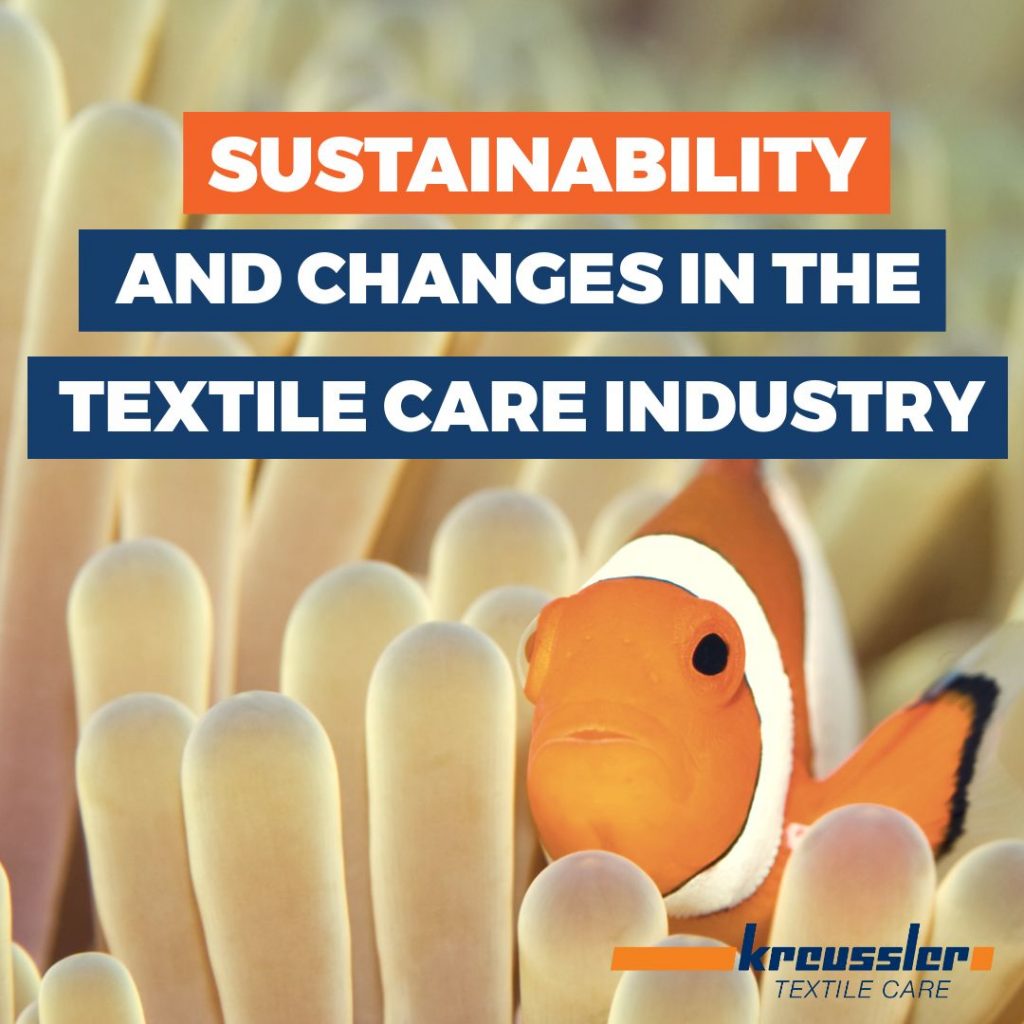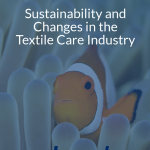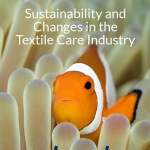A short interview about sustainability and textile care with Dr. Helmut Eigen, Managing Director of Kreussler Germany, Head of Textile Care.
In what way have the general conditions for Kreussler’s textile care business changed in recent years?
Two important framework conditions that influence our business: the market and the legislation. Over the last six or seven years, the market has become increasingly consolidated and concentrated, especially in the industrial laundry sector, but also in the raw material supplies. With the emergence of market giants such as Berendsen/Elis or Initial/CWS-boco, the price war is, of course, getting stronger and stronger and the demands placed on detergent suppliers are becoming more and more strict, with tenders covering an increasingly broader scope. What we are also observing in the market is that the trend towards saving energy, water, and products without worsening the quality and durability of the laundry is increasingly reaching its technically feasible limits.
The legal framework has also changed considerably in recent years, which – due to the biocide and CLP regulations and the whole REACH issue – is reflected in an extremely increased administrative effort, but also higher costs and lower supply. What used to be done as additional tasks to the actual work is now implemented by several full-time positions.
Costs of raw materials are rising. What is the current situation regarding washing and dry-cleaning chemicals? How does Kreussler deal with it?
Since we are a very raw material-intensive company, even small price increases have a noticeable effect. However, the increasing shortage of raw materials is causing an even stronger impact. In addition, the low water level of the Rhine last year caused transport problems. Since the large ships could not sail, we had to switch to other, more expensive and more complicated ways of transport. Of course, personnel costs are also higher if you have to find such alternatives and redistribute orders. The transport situation has generally deteriorated in recent years. In the case of trucks, the lack of drivers is increasingly leading to low availability of transport places.
To reduce our dependence on raw material suppliers and generally optimize the supply chain, we have built a new company building. It is a combination of a computer-controlled high-bay warehouse and a four-story office building. Three thousand six hundred pallet storage places are located on the 2,500 m2 floor space, which can be expanded by 30% if required. This will sustainably increase our buffer capacities for raw materials as well as for our finished products, which in turn will significantly reduce the risk of supply bottlenecks due to shortages of raw materials.
Efficiency and productivity, energy and water savings, sustainability, textile protection. How would you prioritize these things?
These topics are all interconnected and influence each other. For us at Kreussler, sustainability has always been a significant issue: it is not for nothing that we developed a process for textile cleaning in 1991 with wet cleaning, which works with water and biodegradable special cleaning agents instead of solvents. Thanks to solar collectors on the roof of our new building, we generate almost half of the electricity we consume ourselves. Our new wastewater recycling system also ensures optimized recycling management in this area.
In general, the optimization of resources, be it energy or water, has been a significant topic in the industry since the turn of the millennium. It has been pushed forward even further, but today it is increasingly reaching its chemical and physical limits. It is important for us to state that there can be no uniform solution. To achieve the best results, the right combination of chemical and physical parameters must be found for each customer individually. You have to take a holistic approach and be aware, for example, that you cannot lower the washing temperature at will to save energy: as temperatures drop, you need more product to get the laundry clean. This is why we have developed our OptiCare 50° process for industrial laundries, which optimally combines the factors of dirt removal, dosage, energy, material protection, wastewater, disinfection, and process reliability. Our products are concentrated close to the limits of what is technically feasible and ensure optimum efficiency on the detergent side.
In general, I see new possible ways for further optimization in textile chemistry, especially in the field of enzymes and polymers. Due to the REACH regulation, very few new raw materials are coming onto the market today, whereas in the past there were several unique alternatives to be tested every two or three years, which could probably solve specific problems even more efficiently. Since enzymes and polymers are currently not covered by REACH, there is a high potential for exciting new developments here. However, longer-chain detergent polymers are also falling into disrepute due to the microplastic discussion, although many of them are biodegradable and do not enrich in the food chain.
Another alternative for new developments are substances that have already been tested for REACH compliance in other areas, such as food production, cosmetics, and other industrial applications. There are still many new ideas to be tested.
Is Kreussler dealing with the topic of Microplastics? If so, in what way?
Microplastics are currently not a significant topic in the industrial production of commercial laundry detergents. Our strategy on plastic waste, in general, is to use as much recycled material as possible in our packaging and to continue to invest in rinsing technology and wastewater treatment to reuse plastic packaging.
We hope you enjoyed this brief interview with Dr. Eigen and hope to bring you more news about the future of sustainability, textile care, and industry updates from Kreussler Germany.



